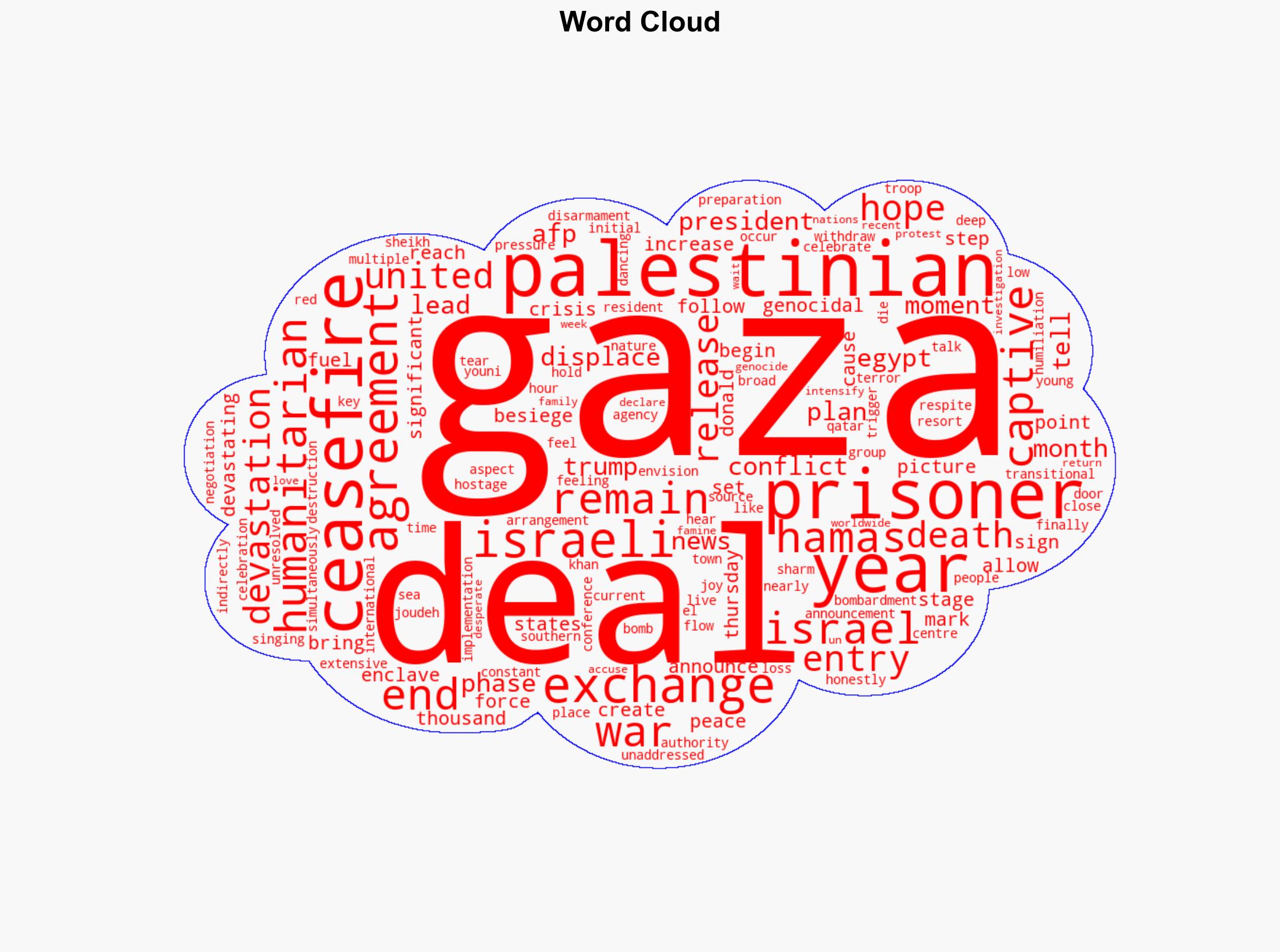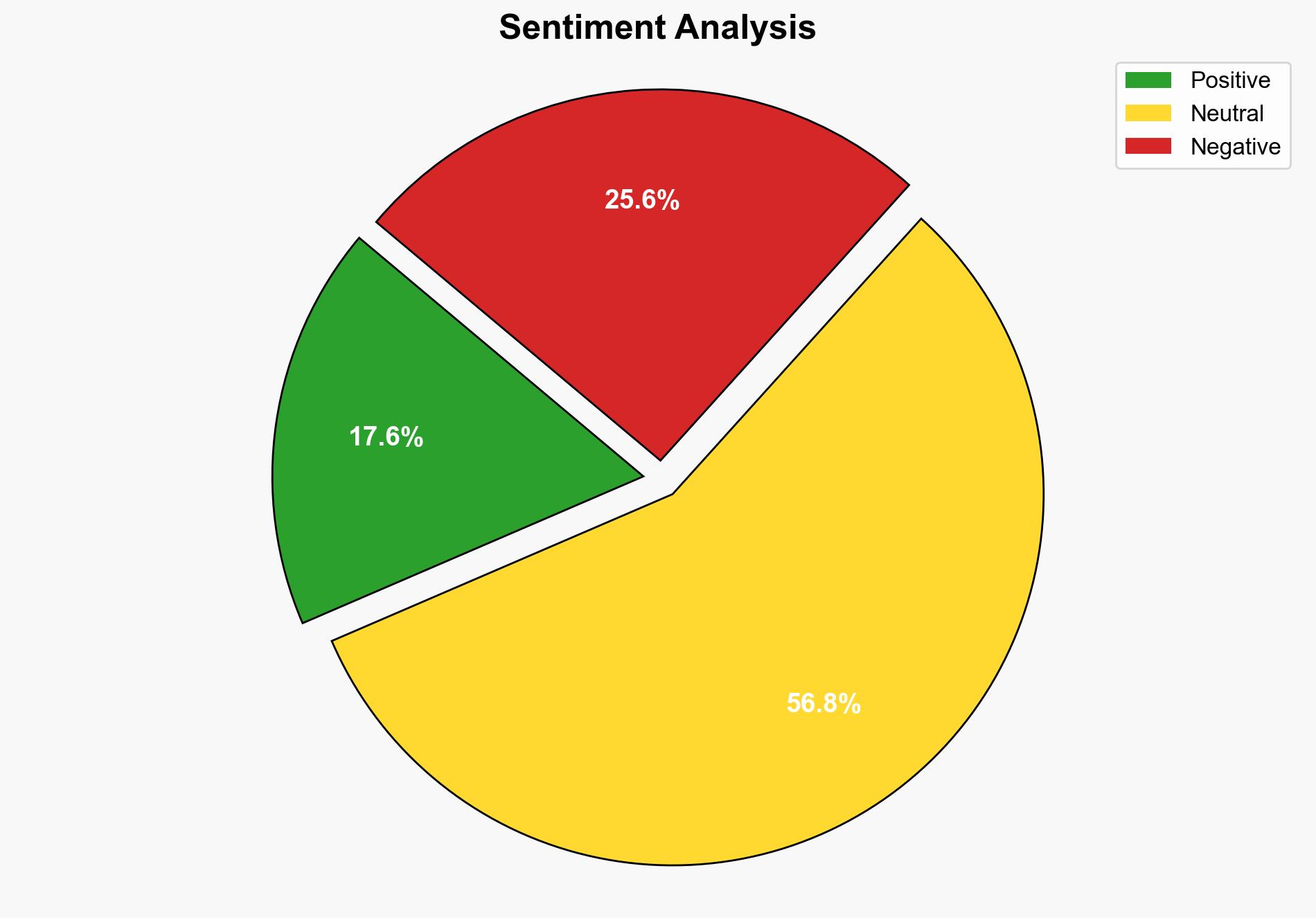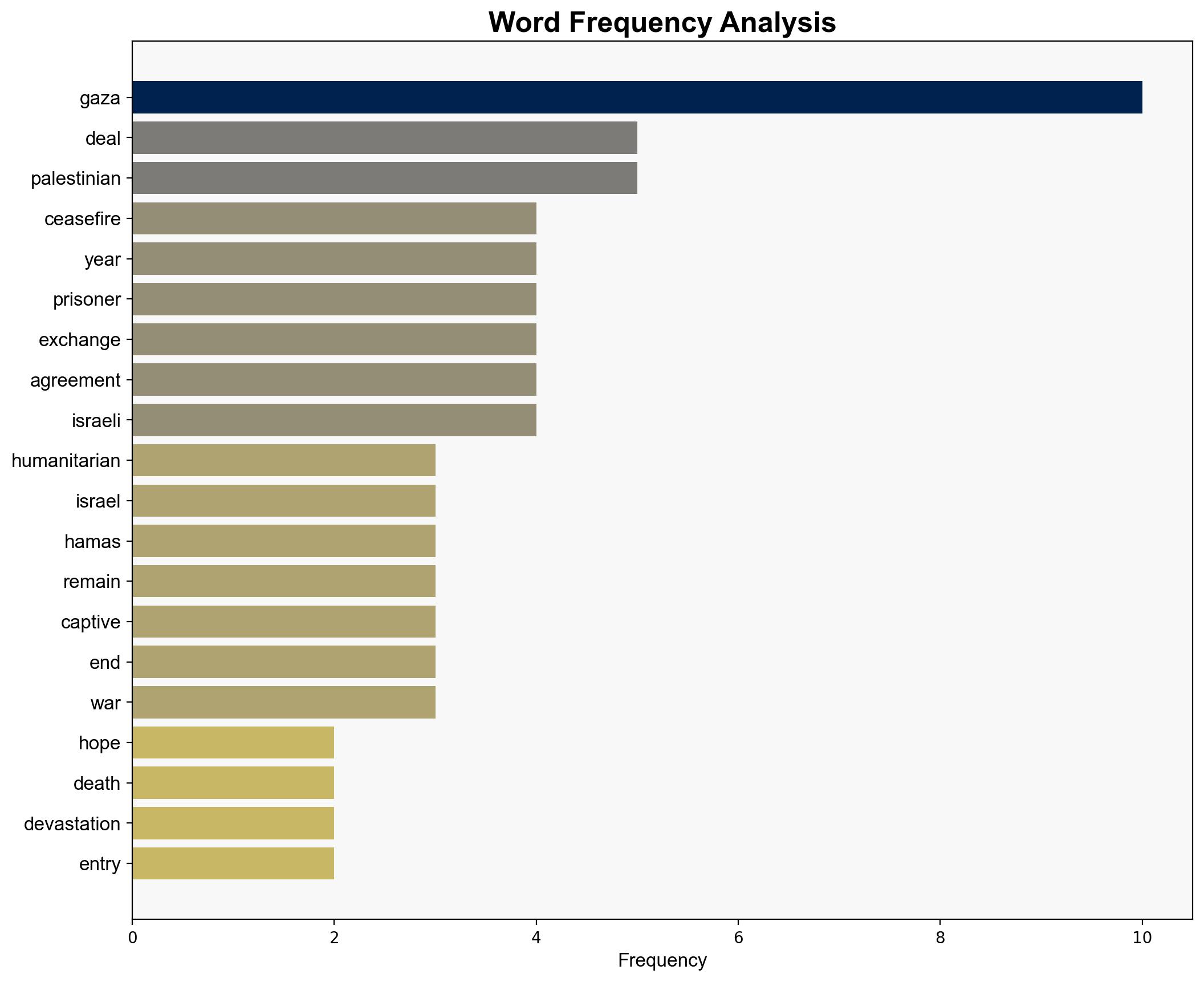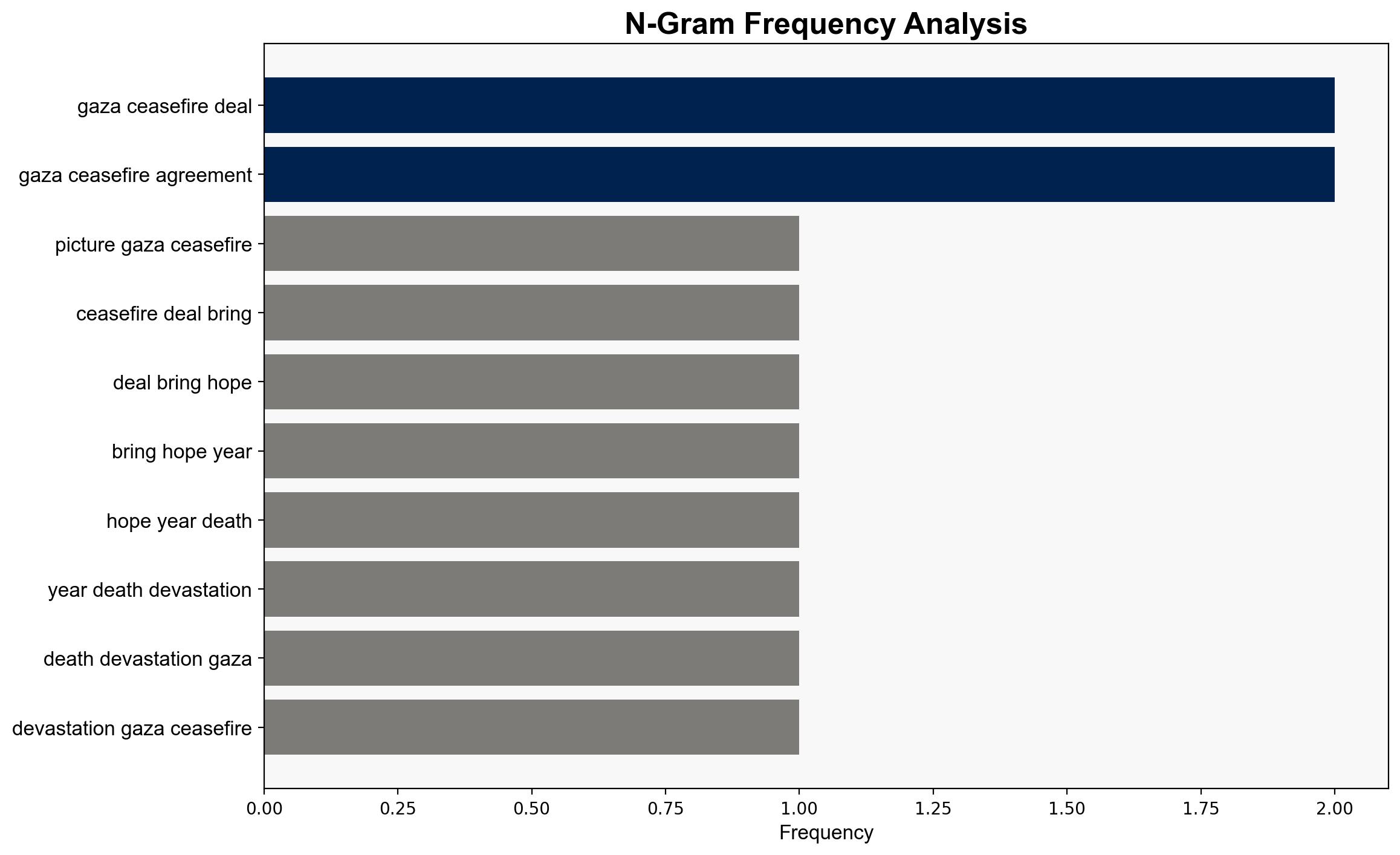Gaza ceasefire deal brings hope after years of death and devastation – Al Jazeera English
Published on: 2025-10-09
Intelligence Report: Gaza ceasefire deal brings hope after years of death and devastation – Al Jazeera English
1. BLUF (Bottom Line Up Front)
The ceasefire agreement between Israel and Hamas, facilitated by Egypt and influenced by international pressure, marks a significant step towards reducing hostilities in Gaza. However, the sustainability of this peace is uncertain due to unresolved issues such as Hamas disarmament and the establishment of a transitional authority. The most supported hypothesis suggests that while the ceasefire may temporarily reduce violence, long-term peace requires addressing deeper political and humanitarian issues. Confidence level: Moderate. Recommended action: Support diplomatic efforts to address underlying causes of conflict and monitor compliance with the ceasefire.
2. Competing Hypotheses
1. **Hypothesis A**: The ceasefire will lead to a lasting peace in Gaza, reducing violence and enabling humanitarian aid to flow freely. This hypothesis is supported by the international community’s involvement and the immediate cessation of hostilities.
2. **Hypothesis B**: The ceasefire is a temporary measure that will not resolve the underlying political tensions, leading to a potential resumption of conflict. This is supported by the lack of agreement on key issues such as Hamas disarmament and the establishment of a transitional authority.
Using ACH 2.0, Hypothesis B is more supported due to the absence of resolution on critical issues and historical patterns of ceasefires failing without comprehensive political solutions.
3. Key Assumptions and Red Flags
– **Assumptions**: Both hypotheses assume that international pressure will continue to influence the parties involved. Hypothesis A assumes that humanitarian aid will significantly improve conditions and reduce tensions.
– **Red Flags**: The lack of detailed plans for Hamas disarmament and transitional governance is a major red flag. The potential for miscommunication or non-compliance by either party could undermine the ceasefire.
– **Blind Spots**: The role of other regional actors, such as Iran or Turkey, in influencing Hamas or Israel’s actions is not addressed.
4. Implications and Strategic Risks
– **Patterns**: Historical patterns suggest that ceasefires without political solutions are often temporary.
– **Cascading Threats**: Failure to address underlying issues could lead to renewed violence, increased regional instability, and further humanitarian crises.
– **Potential Escalation**: If the ceasefire fails, there could be an escalation in military actions, potentially drawing in regional powers and complicating international relations.
5. Recommendations and Outlook
- **Mitigate Risks**: Encourage international diplomatic efforts to address unresolved issues such as disarmament and governance.
- **Exploit Opportunities**: Use the ceasefire as a platform to increase humanitarian aid and improve living conditions in Gaza.
- **Scenario Projections**:
– **Best Case**: Successful implementation of the ceasefire leads to a comprehensive peace agreement.
– **Worst Case**: Ceasefire collapses, leading to renewed conflict and humanitarian disaster.
– **Most Likely**: Temporary reduction in violence with ongoing political negotiations.
6. Key Individuals and Entities
– Donald Trump: Involved in broader peace plan initiatives.
– AFP News Agency: Source of information regarding the negotiation process.
– United Nations: Monitoring humanitarian conditions and potential famine declarations.
7. Thematic Tags
national security threats, regional stability, humanitarian aid, conflict resolution





